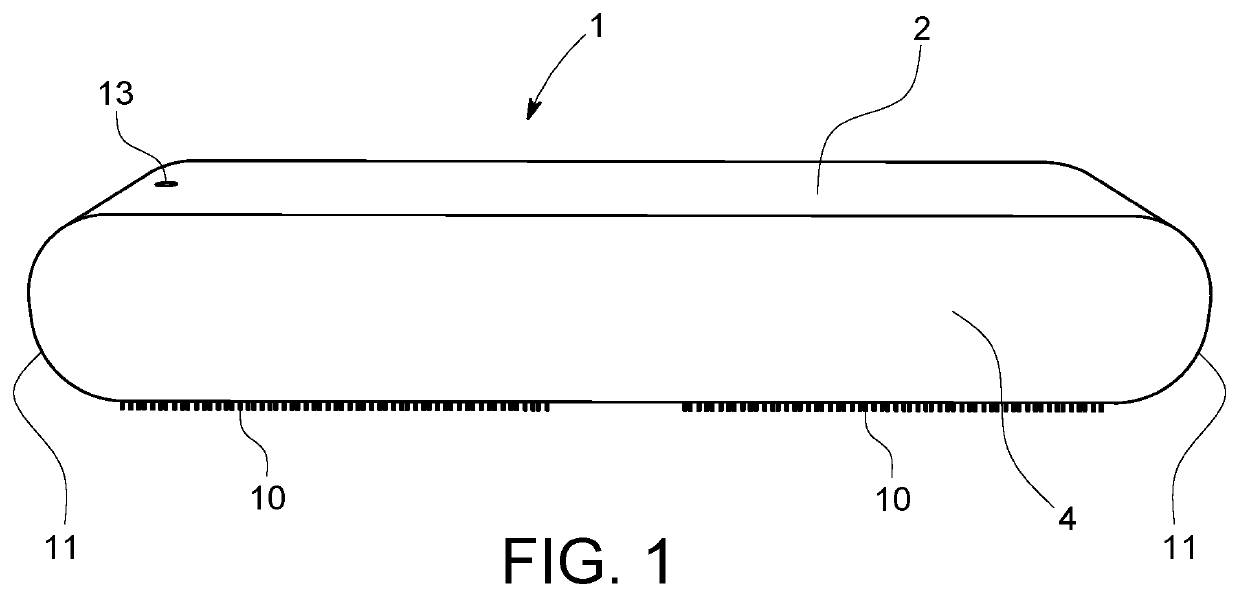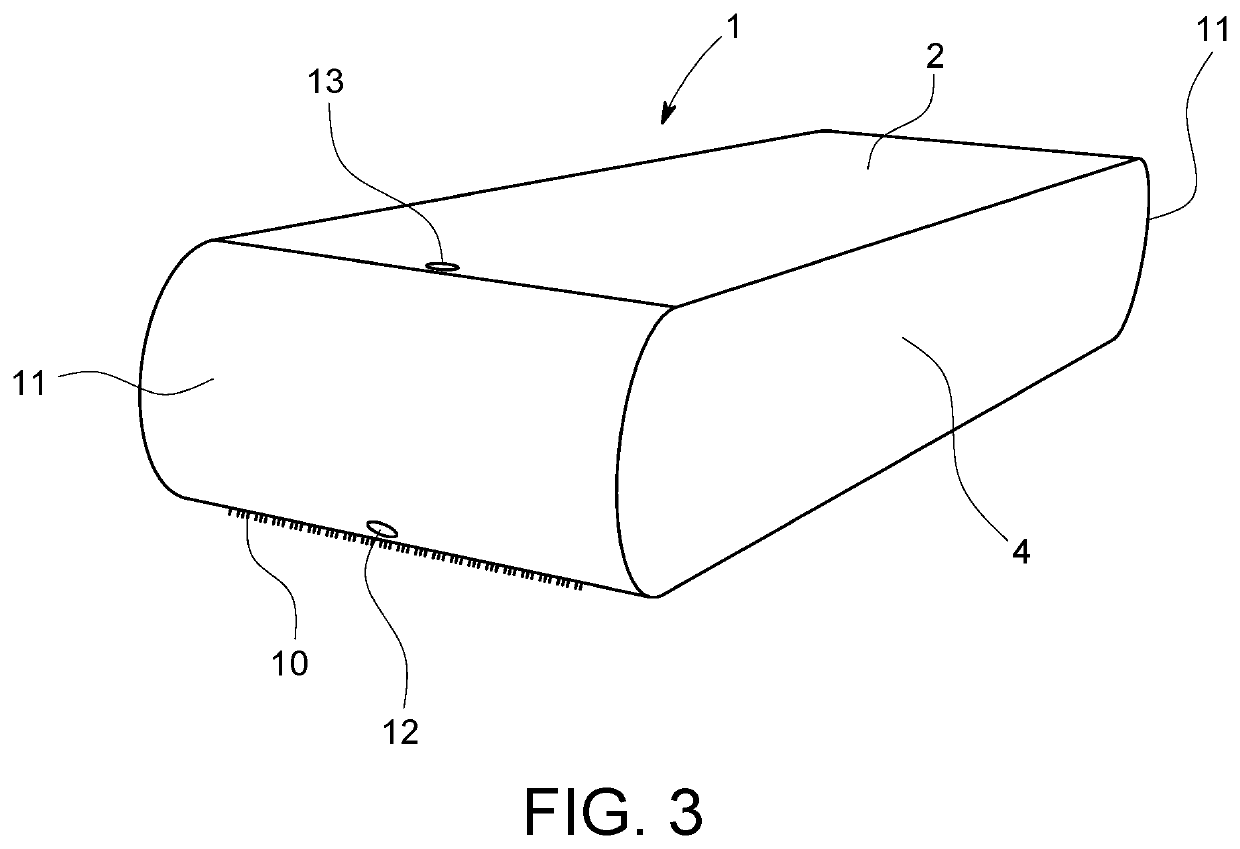However, during use, musicians must apply considerable force to the instrument, which can cause the instrument to move in unwanted directions.
This unwanted movement of the musical instruments is a problem for musicians.
Because musicians depend on
muscle memory in order to consistently play their instruments, when the position of their instrument shifts during a performance, their ability to play is impaired, and the quality and sound of their performance is diminished.
It is also disruptive for the musician to have to attempt to reconfigure their instrument setup during a performance.
However, such method has numerous drawbacks for the musician.
The objects are extremely heavy, difficult to transport, hard to move or reposition, and they are unsightly in a performance setting.
And we have noticed that one
cinder block is not adequate to stabilize a drum set.
Clearly this is not practical.
And the risk of personal injury to the drummer from carrying, setting up, and transporting such heavy objects is a concern.
So large, heavy devices such as concrete blocks and sand bags are not practical gear for most musicians.
However, we have noticed that the effectiveness of these devices is less than optimal precisely because said anchoring devices are attached to the very moving instrument which they are trying to stabilize.
This attachment of the device to the instrument or its appendages means that the devices are subject to all of the vibrations, bouncing, rebounding, and
chaotic forces of the musical instrument itself.
Such bouncing and rebounding forces inevitably include upward forces and motion which tend to unweight and uplift the anchoring device and as such cause it to loosen or detach its grip on the floor and thus allow the device and hence the instrument to move in unwanted directions.
In the case of the pedal-activated bass drum, we have observed that anchoring devices mounted onto either the drum rim hoops or onto appendages such as drum spurs experience the aforementioned uplifting problem and tend to lose their grip on floor surfaces resulting in unwanted movement across the floor plane.
It should be noted that the forces and motions caused by operation of musical instruments, are often complex, multi-vectored,
chaotic and somewhat unpredictable.
For these reasons, devices mounted directly to the instruments they are trying to secure will tend to be dislodged from the floor and hence will allow unwanted movement of the musical instruments.
We have also noticed that devices mounted directly onto the musical instruments can damage the surface of the instrument, such as the wood hoops of the bass drum, and for this reason musicians may tend to avoid such devices.
Such an approach is impractical for most drummers because it cannot be easily removed and reinstalled in various locations as the drummer travels.
Moreover the nails, screws and bolts would permanently damage the flooring leaving holes and splinters, much to the consternation of venue owners and other performers subsequently using the venue.
As such, this approach cannot be used with blocking material that has pliable, malleable, shock-absorbing properties as may be desirable for reducing vibration, dissipating energy, and minimizing rebound of percussive forces.
This would make the
system heavy, bulky, more difficult to transfort, and generally non-portable.
Also such a
system would not permit
relocation of the affixed board on the floor-covering material so the musician would be confined to one predetermined setup of their instruments.
Because the spacing on instrument components, such as the spacing between the bass drum and hi-hat cymbal stand vary infinitely between drummers based on physique, size, method of playing, and personal preference, any
system having boards permanently affixed could not fit all drummers and would hence have commercial
disadvantage.
We have observed several problems with this approach.
First, it creates a
tripping hazard to have ropes, strings, or straps strung above the floor between the bass drum and the drummer's seat.
Second, during the course of a performance, drummers often need to reposition their seat for comfort, to adjust their position based on the music, and other reasons.
If the bass drum is tethered to the seat, any repositioning of the seat will inevitably cause the bass drum to move and changes its position relative to the rest of the drum set.
 Login to View More
Login to View More  Login to View More
Login to View More 


